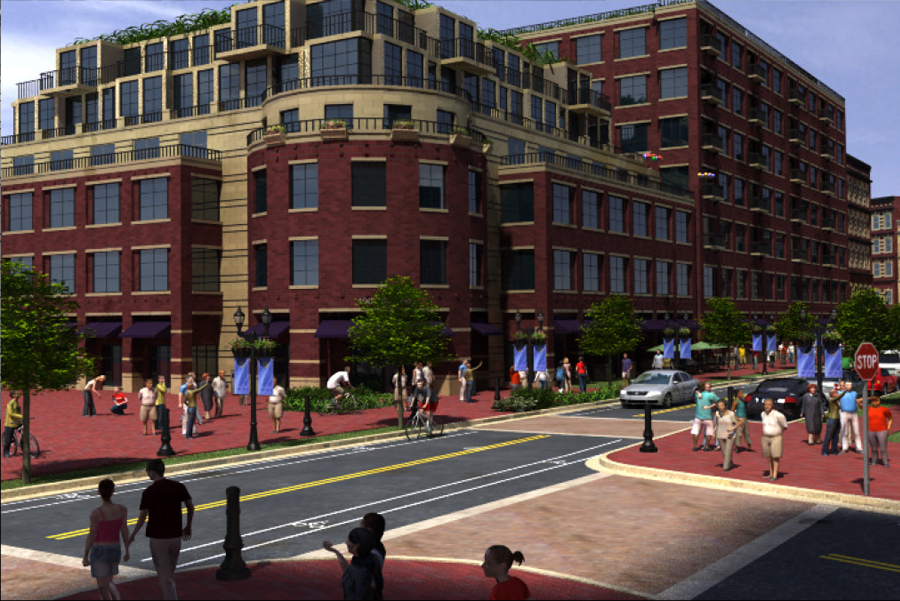Mixed-Use Means Multiple Revenue Streams
By Kenneth J. Puncerelli, CEO LAI Design GroupSince the economic tsunami of 2008 has left the real estate industry living in the new normal, developers, designers, property managers and city officials alike need to become more innovative in both redevelopment and consideration of new real estate development projects. While the concept of mixed-use is certainly not a new concept, the need to maximize revenue opportunities and project flexibility is even more critical than in the past. With skittish investors and anemic capital flows into real estate assets, the need for a solid business plan, an experienced team, and the almighty exit strategy are paramount to both project financing as well as risk amelioration. Without financing the project is a dream; without a well-thought-out business plan and experience at the helm you end up with a well-financed train wreck! The key attributes that you want to look for in a mixed-use project include Project Flexibility, Green Building Practices, Diverse Market Mix, and Compactness or Phase-ability.
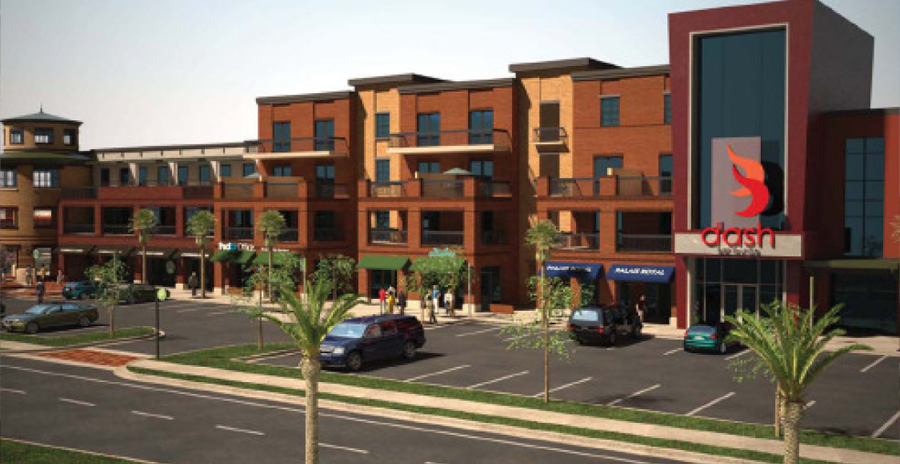
Project flexibility begins with land use and zoning which allow certain categories of permitted uses on the property. Zoning flexibility allows a property to be repurposed with compatible uses that generate revenue during different market cycles. An example for the first floor or street level space includes retail/restaurants and/or art galleries, while the second story space and remaining floors could include office/artist incubator space or apartments or extended stay hotel suites. In addition to obtaining flexibility for permitted uses, ensuring that the building design lends itself to non-structural modifications is equally important so that tenant mix and occupancy ensures the property remains hot in market cycles. This may require a bit more upfront design work to lay out alternate uses that work with window alignments, ingress, and emergency egress as well as ensure plumbing and mechanical stacks work for alterna0te scenarios. The new normal "requires design professionals to think like developers.”
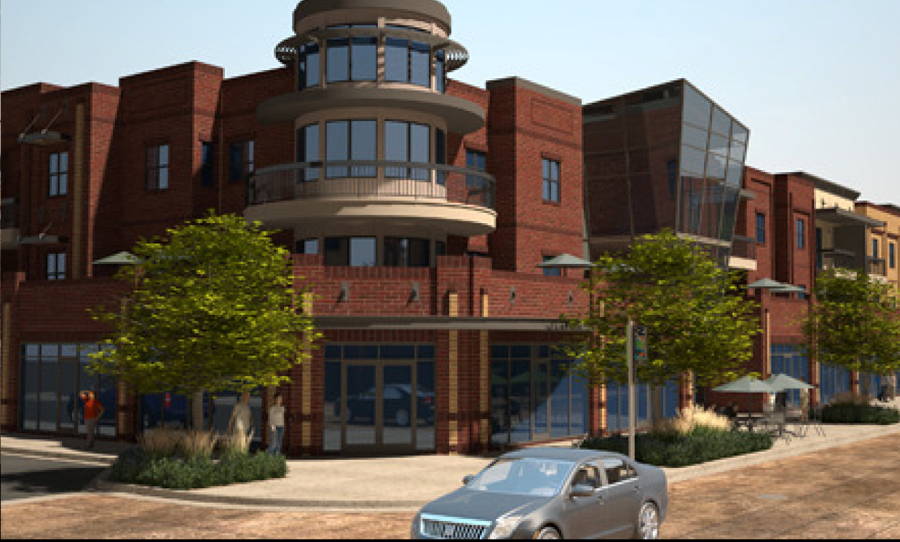
Green building practices or sustainable design can place additional dollars in your pocket. The trick here is to grab the low hanging fruit such as the use of low flow pluming fixtures, compact fluorescent lights, additional insulation and a superior building envelope, energy star appliances, as well as high efficiency mechanical and electrical systems. Certain green building practices can significantly reduce operating costs and maintenance. It’s important to point out that low maintenance does not mean no maintenance. The big benefits to reducing operating expenses are the increases in Net Operating Income and increases in the unlevered CAP rate and overall valuation when it comes time to sell or recapitalize the debt.
Many of us are familiar with urban mixed use projects. They typically include retail / commercial on the ground floor and either office or apartments on the floors above. A diverse market mix includes either a mix of commercial uses or residential uses or a combination of both. The objective of having a diverse market mix is analogous to the concept of selecting a mutual fund versus an individual stock, which speaks to the heart of diversification. By having a diverse tenant mix you minimize the risk associated with a single user defaulting on their lease vs. the low probability of all 50 tenants defaulting. Additionally, this provides an opportunity to have multiple revenue streams from commercial and residential tenants, staggered rent renewals, and a higher blended lease rate with mature leases commanding a higher rate blended in with new leases at lower rates. The financial result of a diverse market mix is typically a higher internal rate of return (IRR), higher valuations (lower CAP rates), and less turnover risk due to staggered leases.
The dollar size of your project often drives the ability to obtain financing. Compact projects or the ability to phase a larger project and deliver a phase with a meaningful scale to generate adequate revenue to service the debt can easily be addressed during the preliminary design stage. This stage is where project opportunities can be made or lost so careful financial analysis needs to be given to both physical size and financial size of the project. During the go-go days of the mid 2000’s it was not unusual for a mixed use master planned community to spend $20 million on infrastructure costs just to be able to flush the first toilet. This example did not include having any buildings constructed for that price. It is perspective like this which gives rise to the caution of lenders, prudence by project developers and consideration for project scale and phasing. Many urban projects in the Denver area could be built in their entirety for $20 million so relative to an urban mixed use example compared to a mixed use master planned community the scope and scale are much different.
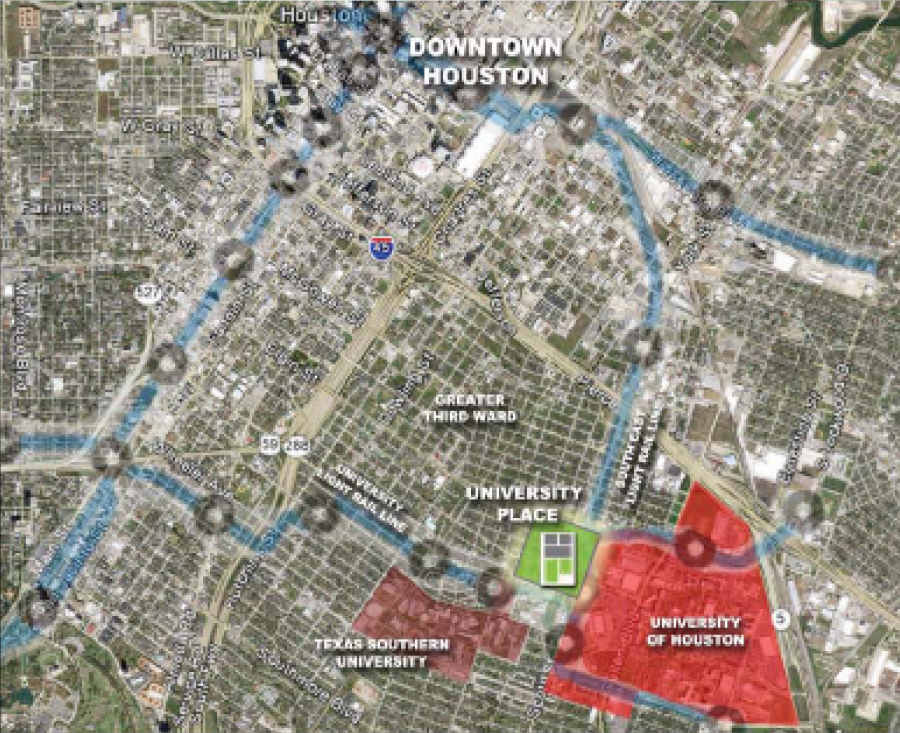
Case Study Mixed Use Project
University Place Redevelopment – Houston TexasUniversity Place, a new Transit Oriented Development is located in the heart of Houston's historic 3rd ward district. The site is uniquely situated between 2 major universities, the University of Houston and Texas Southern University, which include a daily population of over 70,000 students, faculty and staff within a 5 minute walk of the project. Additionally, the location is conveniently situated for access between major highways I-45 & I-59 as well as the newly constructed light rail line.
University Place is where shopping, dinning, entertainment, and living meet the needs of students, current and future residents. University Place encompasses 8 blocks of total redevelopment and will be phased for incremental completion beginning at the Scott Street corridor across from the University of Houston Robinson Stadium. The entire project will include a new civic library, a grocery store, shops, restaurants, offices, apartments, townhomes, hotels, as well as community and educational facilities costing approximately 250 million dollars when complete.
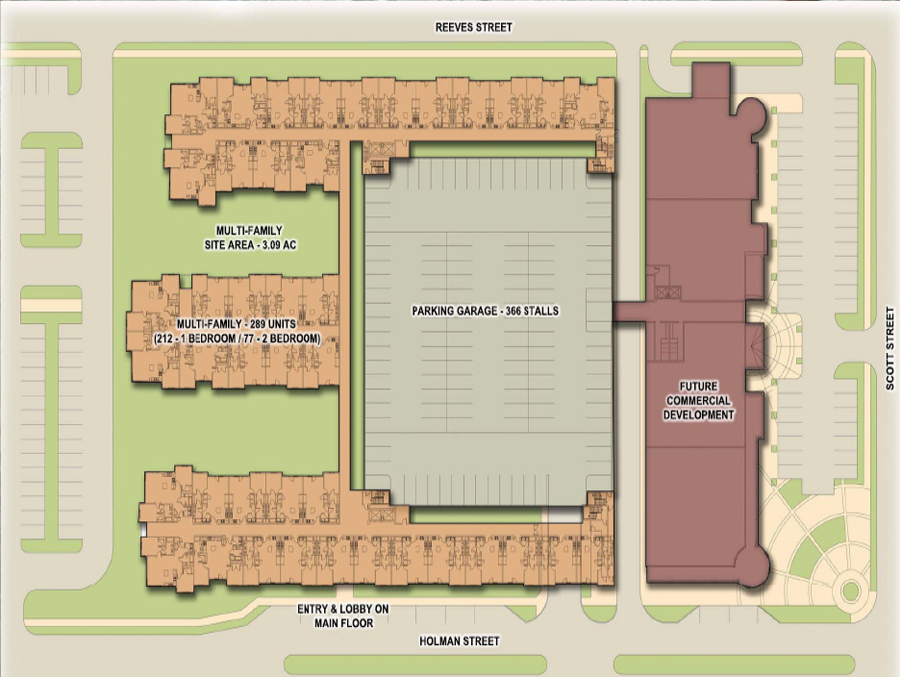
Phase 1 Summary
Project requires Debt and Equity from investor and lender. Phase 1 of the redevelopment will occur along the Scott Street corridor, the new University Place Apartments provide spacious one and two-bedroom open floor plan units that are ideal for students and young families. Residents can access the light rail by skywalk connections that lead to the iconic pedestrian bridge across Scott Street which connects the University of Houston, University Place mixed use and apartments in a cohesive manner. This phase can be developed as 1 project with apartments and mixed use or 2 individual projects and was designed to allow for phasing and ownership flexibility.
University Place Apartments as 1 Project
- 289 total apartments
- 212 units of 1 bedroom units
- 77 units of 2 bedroom units
- 489,713 sf of construction for apartments and parking structure
Funding Needs Identified Apartments
Debt(loan) with DCR 1.25 min, 75/25 LTV
$29,138,812
Equity Land Purchase (rolled into financing & paid back) $3,152,175 Equity Cash $9,712,937 Total Equity
$12,865,112 Total Funds Needed
$42,003,924
Land Cost rolled back into financing once acquired ($3,152,175)
Total Funds Needed After Financing
$38,851,749
Ro Cap Rate Single Period
8.61%
Re Cash on Cash Single Period
15.13%
Actual DCR
1.78
IRR on Equity Holding Period Before Tax
31.60%
IRR Overall No Debt Holding Period Before Tax
15.20%
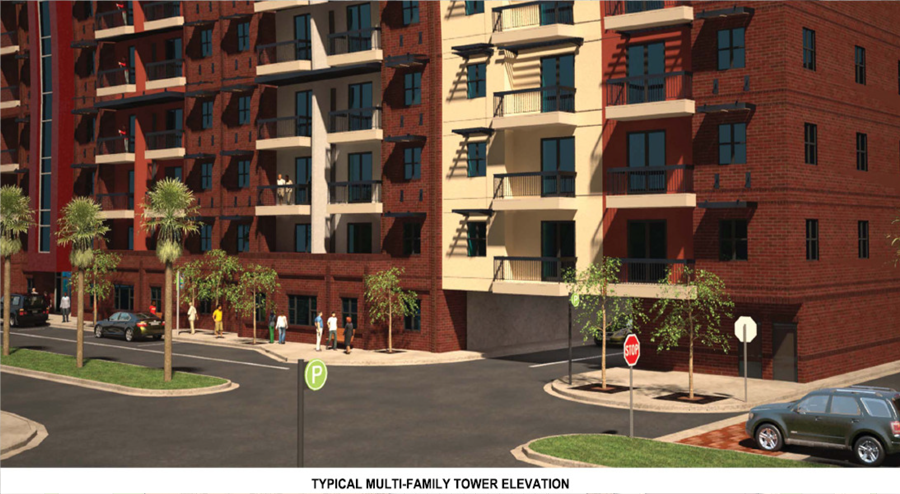
Market rate apartments illustrates the project vision that coincides with financial model and associated capital stack, returns on invested capital and deal structure. (Financial analysis, architecture, & urban design by LAI Design Group)
University Place Mixed Use – Mixed Use Commercial & Multifamily as 2nd Project
- 45 total apartments
- 33 units of 1 bedroom units
- 12 units of 2 bedroom units
- 29,245 sf office
- 41,780 sf retail
- 273,875 sf of construction for commercial, apartments and parking structure
Funding Needs Identified Apartments
Debt(loan) with DCR 1.25 min, 75/25 LTV
$19,573,252
Equity Land Purchase (rolled into financing & paid back) $2,638,624 Equity Cash $6,524,417 Total Equity
$9,163,041 Total Funds Needed
$28,736,293
Land Cost rolled back into financing once acquired ($2,638,624)
Total Funds Needed After Financing
$26,097,669
Ro Cap Rate Single Period
8.61%
Re Cash on Cash Single Period
13.31%
Actual DCR
1.69
IRR on Equity Holding Period Before Tax
28.30%
IRR Overall No Debt Holding Period Before Tax
14.30%
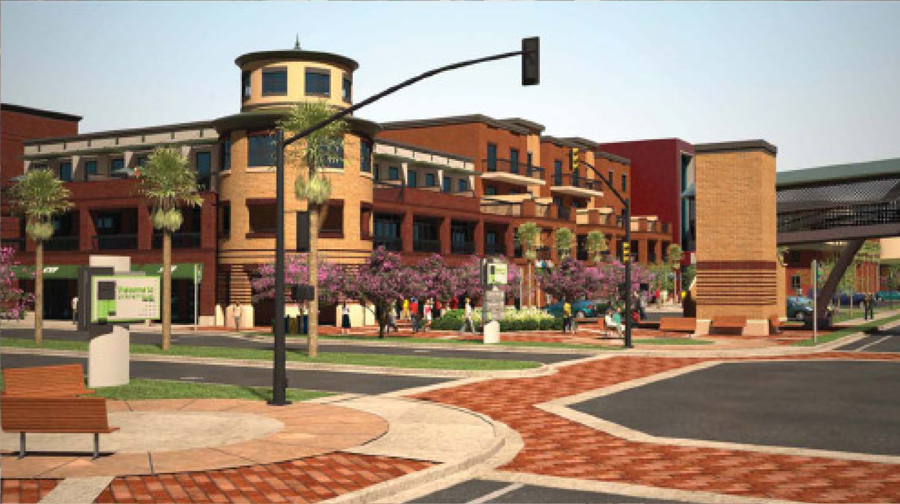
Mixed-use commercial illustrates the project vision that coincides with financial model and associated capital stack, returns on invested capital and deal structure.(Financial analysis, architecture, & urban design by LAI Design Group)
Total Funding Required for Combined Projects if Developed Concurrently
Debt(loan) with DCR 1.25 min, 75/25 LTV
$48,712,064
Equity Land Purchase (rolled into financing & paid back) $5,790,799 Equity Cash $16,237,354 Total Equity
$22,028,153 Total Funds Needed
$64,949,418
Land Cost rolled back into financing once acquired ($5,790,799)
Total Funds Needed After Financing
$64,949,418
While IRR summaries for each phase are not additive to suggest a 59% return, however the conclusion points to a handsome return for each phase individually at 31% for apartments and 28% for the mixed use commercial phase respectively. These returns are enhanced because smaller amounts of capital are deployed in phases, which allow the developer to complete a smaller project sooner and achieve cash flows and rent stabilization between phases. This scenario compares with doing both phases at one time and enduring a longer construction period with greater capital outlay and no income for 36-42 months vs 18-24 months by staggering the phases. The name of the game in real estate finance is all about the “time value of money” to achieve the greatest returns. This can be tricky with mixed use projects, which is why it’s critical to be able to dissect an overall master plan to ensure each segment can stand on its own with respect to marketability, financing and practical methods of construction.
Mixed use projects are not for everyone because of the level of development sophistication and experience required. As you can tell by the previous discussion of scope and complexity there are many moving parts with a mixed use project not the least of which is property management, financing, and phasing. When embarking on any development project the best first step is to work with an experienced design firm, reputable general contractor, legal counsel, and tax specialists. The other consideration is to bring your general contractor into the conversation sooner rather than later to assist with construction budgeting and value engineering as necessary.
Kenneth Puncerelli is the CEO of LAI Design Group with offices in Denver, Colorado and Houston, Texas. The firm provides architecture, planning & entitlements, visual media, landscape architecture, real estate advisory and development management services. LAI Design Group specializes in affordable housing, mixed use/commercial, master planned communities, active adult and resort/hospitality projects. Mr. Puncerelli is a licensed design professional and holds an MBA as well as a Master of Science in Finance with a specialization in Real Estate Finance. For more information about LAI Design Group, please call 303-734-1777 or visit our website at www.laidesigngroup.com
